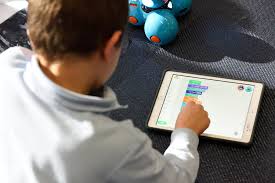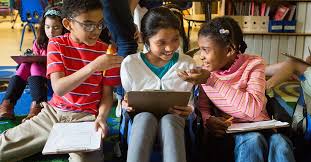Why are visuals important for young students? Visual supports, such as photos, drawings, objects, gestures, and print and environmental cues, can help. They are sometimes paired with verbal explanations. They help children know what to do, learn new skills, and feel included. Visual strategies are considerate of diverse learners.
Why is visual learning more effective? Visual learning also helps students to develop visual thinking, which is a learning style whereby the learner comes better to understand and retain information better by associating ideas, words and concepts with images.
Why is visual representation important for children? Visuals direct attention to them and hold attention. Visuals allow more time to process the information. Visuals assist in remembering. Using the same words every time a visual is shown, teaches your child those words.
How do visuals affect learning? Visual learning helps you to store information for a longer period of time. It is said that videos and images are directly processed by long term memory. Visual learning increases retention by 29-42%. It helps you to process information primarily through visuals and improves your learning process.
Why are visuals important for young students? – Additional Questions
What are the advantages of visual?
Understanding The Power Of Visuals: The Advantages Of Visual Learning
- Help Store Information Longer.
- Make Communication Quicker And Simpler.
- Aid Better Comprehension.
- Act As Stimulators For Emotions.
- Drive Motivation.
- Unsuitable Visuals Equals Unhappy Learners.
Why are visuals important?
Visual communication results in better retention of the information. From a scientific perspective, it’s been found that using relevant visuals help the audience remember the information more effectively. Of all information transmitted to the brain, 90% is visual.
How does visual media affect our learning skills?
Research suggests that people learn abstract, new, and novel concepts more easily when they are presented in both verbal and visual form (Salomon, 1979). Other empirical research shows that visual media make concepts more accessible to a person than text media and help with later recall (Cowen, 1984).
How do visuals affect the brain?
Summary: New research shows for the first time how visual attention affects activity in specific brain cells. The study shows that attention increases the efficiency of signaling into the brain’s cerebral cortex and boosts the ratio of signal over noise.
How do images help students learn?
Around 40 percent of learners respond better to visual information than text alone. Simply seeing a picture allows users to recreate the experience in their mind. eLearning professionals can benefit from this by telling stories in their courses through entrancing images and compelling videos.
What are the benefits of visual presentation?
5 Amazing Advantages of Visual Communication You Can’t Ignore
- Deliver information more directly.
- More flexible than verbal communication.
- More attention-grabbing and engaging.
- Makes an impact on the audience.
- Increase the credibility of your message.
- Any more advantages of visual communication ?
What are the strengths of Visual learners?
Learning strengths of visual learners
They have a good sense of direction because they can read maps. Their love of balance means they tend to be neat. They often do well in class tests because they remember where the information is and can see it written down. They may like colour.
What is the effectiveness of visual presentation?
In summary. Visual aids are worth including in your presentations because they can help you explain information more coherently which makes presenting easier for you and learning easier for the audience. They also help add variety to your presentation thus making it more interesting for the audience.
How do visuals improve the impact and quality of a presentation?
Visual aids can reinforce and clarify key points in your presentation. Engaging both the eyes and the ears of your audience members improves both their understanding and their retention. Good visual aids create a sense of consistency and balance, and inspire a greater level confidence in the legitimacy of your message.
What makes an effective presentation?
A good presentation should be concise and should be focused on the topic. It should not move off-track. A good presentation should have the potential to convey the required information. The fear should be transformed into positive energy during the presentation.
How do visuals improve the impact and quality of a presentation quizlet?
What are your options for supporting a presentation with visuals? increasing the audience’s ability to absorb and remember information. Behavioral research has shown that visuals can improve learning by up to 400 percent because humans can process visuals 60,000 times faster than text.
What is the primary purpose of visuals in a presentation quizlet?
When using a handout always read the handout to the audience. Based on the lecture slide visual, pie charts are used to show the relative size of the parts of the whole. The primary purpose of a visual aid is to reinforce the message and clarify key points of a business presentation.
Why is it important to keep visuals simple especially in terms of design choices?
Question: Multiple choice Why is it important to keep visuals simple, especially in terms of design choices? –You can add on to them during the presentation, based on audience needs -Presentation software cannot read all fonts -There is less likelihood the audience will copy the visuals, protecting your ownership –
Which of these is one key way visuals help the audience absorb and remember information?
responsible for conveying more of the content. Which of these is one key way visuals help the audience absorb and remember information? Humans process visuals faster than text.
What is the definition of visual learning style?
Being a visual learner entails thinking in pictures rather than in words. Visual learners learn best by utilizing graphs, tables, charts, maps, colors and diagrams. They also tend to learn holistically, instead of sequentially, or in parts. One of the benefits of being a visual learner is easily seeing the big picture.
Why is visual memory important?
Visual memory is what enables a child to recognise and remember letters, words, and their meaning. Recognising, remembering, and applying information quickly and easily is critical for performance in reading comprehension, and the student must have a healthy visual memory for ease of comprehension.
Why is visual literacy important?
Visual literacy is invaluable to reader development in so many ways. It allows gradual development of the student reader’s understanding, slowing down the analysis process by making it more deliberate, and enabling students to build their own interpretation, to rely on their own powers of critical thinking.




